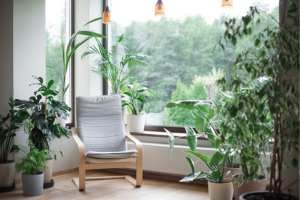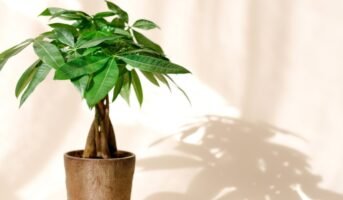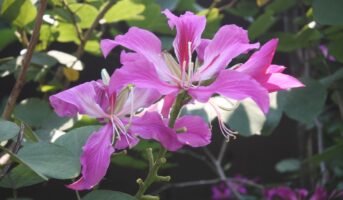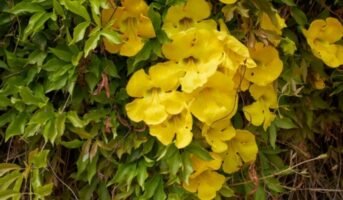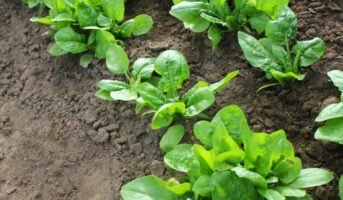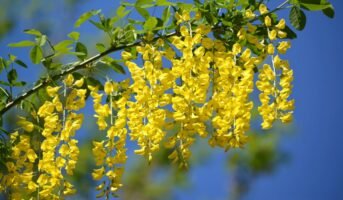Big indoor plants are not simply decorative; they contribute to a healthier and better-looking indoor environment. Plants such as Bird of Paradise or Fiddle Leaf Fig with big, lovely leaves give the feel of the outdoors to indoors. They are not only appealing, but they also purify the air.
It is so easy to take care of them, give them some light, and water when the soil is a little bit dry. Therefore, if you are looking forward to making your home more unique and relaxing, big indoor plants are the thing to consider.
See also: Primrose: Tips to grow and care
Big indoor plants: Types
Fiddle Leaf fig
Plant lovers may choose the Fiddle Leaf Fig, which has huge, violin-shaped leaves. Classy and dramatic, it’s instantly the star of any room.
Monstera deliciosa
Monstera deliciosa, which has Swiss cheese-like leaves, is a tropical plant that adds an exotic touch to space. The bold foliage is distinctive and serves as a highlight in the composition.
Bird of Paradise
It brings the tropical paradise feeling into your indoor environment through a banana-shaped bird of paradise. The presence of this majestic piece adds to the exotic flare which is a great addition to your home.
Rubber Plant
The Rubber Plant has broad dark green leaves and it is a hardy choice. Despite its beauty, it adapts well to indoor settings and is quite resilient and therefore requires little maintenance.
Snake Plant
The Snake Plant, also known as Mother-in-law’s Tongue, has upright leaves that resemble sword-shaped. However, this plant is also well known for its air-purifying abilities and thus, it becomes a functional and chic item in any room.
Yucca elephantipes
Take to architecture excellence with the Yucca Elephantipes, whose leaves are long and resemble swords. Dramatic presence gives it a modern look which makes it a suitable plant for a person seeking a statement plant.
Pothos
Pothos and its cascading vines and heart-shaped leaves provide a bit of nature to corners and shelves. It is very versatile and can flourish in low-light conditions, making it suitable for many indoor spaces.
ZZ Plant
ZZ Plant with glossy dark green leaves is a hardy and low-maintenance alternative for indoor plants. It thrives in low light thus good for areas with limited natural sunlight.
Areca Palm
The Areca Palm with its feathery and arching fronds adds the feel of a tropical island to your home. The graceful look is an added value that makes it appear beautiful to be found in various rooms.
Big indoor plants: Key characteristics

Big indoor plants: Benefits
-Indoor air quality benefits of the big indoor plants include filtering and releasing oxygen.
-Their presence lowers stress and improves overall mental health.
-These plants fit a biophilic design that links nature with people to improve aesthetics.
-Large indoor plants as fashionable and natural room dividers that define distinct spaces within a room.
-Various shapes and sizes are suitable for diverse design tastes ranging from dramatic to classic foliage.
-Many indoor plants are of low maintenance hence they can be easily grown by all categories of gardening expertise.
-These plants such as Bird of Paradise and Dracaena Marginata add a striking visual appeal by their sheer size and beauty.
-Big indoor plants can be found in different spaces, thus bringing the charm of nature to numerous environments.
Big indoor plants: Common pests and diseases
Though adding beauty to your living space, large indoor plants may face problems from common pests and diseases. The spider mites are tiny and web-spinning while the scale insects can cause a sticky residue and yellowing. Aphids are soft-bodied and found on new growth that causes stunted growth. Fungus gnats, visible around the soil, may damage the roots. Sucking insects such as the mealybugs, cotton-like insects on stems weaken the plant.
Examples of common diseases for large indoor plants include root rot, powdery mildew, leaf spot, bacterial leaf spot, and anthracnose. It is important to identify and treat timely using neem oil or insecticidal soap for the health and vitality of your green mates. It is important to conduct regular inspections and proactive care measures to enhance the lifetime and health of these marvellous indoor giants.
Big indoor plants: Choosing the right one for your space
Light conditions
Determine the natural light you have available in your space. It is worth noting that big indoor plants require different levels of light. For instance, the Fiddle Leaf Fig and Bird of Paradise do well with bright and indirect light whereas the ZZ plant and the snake plant can withstand lower light.
Space availability
Consider the size and configuration of your particular room. Examples of big indoor plants that develop in a vertical pattern include Yucca Elephantipes and Fiddle Leaf Fig. These plants are suitable for corners or areas with low floor space. Some plants, for instance, Monstera Deliciosa, need more horizontal space because of their wide leaves.
Maintenance Level
Assess the seriousness of your responsibility for plant management. If you need a plant that requires little effort, try the Rubber Plant, ZZ Plant, or Snake Plant. However, if you appreciate more physical care, a Fiddle Leaf Fig or Monstera Deliciosa may prove to be worthwhile.
Interior style
Think about the general appearance that you desire for your home or office. Big indoor plants are available in different shapes and textures to suit a variety of interior styles. ZZ Plant fits in a modern design while Areca Palm adds a tropical touch.
Air-purifying qualities
Choose plants well-known to improve the quality of indoor air. Some of these include Snake Plant, Spider Plant, and Peace Lily which are acknowledged to be effective in removing pollutants from the air and improving the environment.
Humidity levels
Think about the humidity levels in your house or the office. For instance, tropical plants like the Bird of Paradise and Areca Palm require higher humidity whereas ZZ Plant and Snake Plant are more suitable in low humidity conditions.
Budget considerations
Big indoor plants can vary in price. Determine your upfront money and ongoing costs of care for the purchase. Some plants may need other accessories such as decorative pots or humidity trays.
Big indoor plants: Tips for healthy growth
A few essential tips can lead to healthy growth for your large indoor plants. Put them in the spots that fit their light preferences but remember, each plant may have its own needs. Set a regular watering schedule where the soil should dry a bit between the watering to avoid over-watering. Select sandy but well-drained soil to prevent wet roots. Clean the leaves regularly to ensure they continue to absorb sunlight. Feed your plants with a balanced fertilizer for their nourishment during the growing season.
FAQs
How do I know when my large indoor plant needs attention?
These indications include dry, yellow, or browned leaves, wilting, pests, or stunted growth. Check your plants often for problems so that you can take care of them.
Where should you position big indoor plants?
Put them in areas that have bright, indirect light. However, some plants may require specific light conditions, which may vary; therefore, each species must be understood.
What size of pot should I give to my large indoor plant?
Select a pot with drainage holes so that it grows in size. Generally, ensure to get a container that is 2 inches in diameter bigger than the current one.
Is it okay to put big indoor plants in my bathroom, and which kind survives humidity?
Peace Lily, Boston Fern, and Spider Plant are some of the plants that grow well in the humidity of the bathroom. Provide indirect light and adequate drainage for them.
How can I creatively display my big indoor plants?
For instance, one could choose to have decorative plant stands or hanging planters and incorporate them into shelves and room dividers.
| Got any questions or point of view on our article? We would love to hear from you. Write to our Editor-in-Chief Jhumur Ghosh at jhumur.ghosh1@housing.com |
Nisha A Rawat, diligently tracks the residential real estate trends and offers valuable insights in her articles. She’s skilled at making real estate terminology easy to understand, ensuring accessibility for all. Nisha’s articles are well-researched and analytical.
